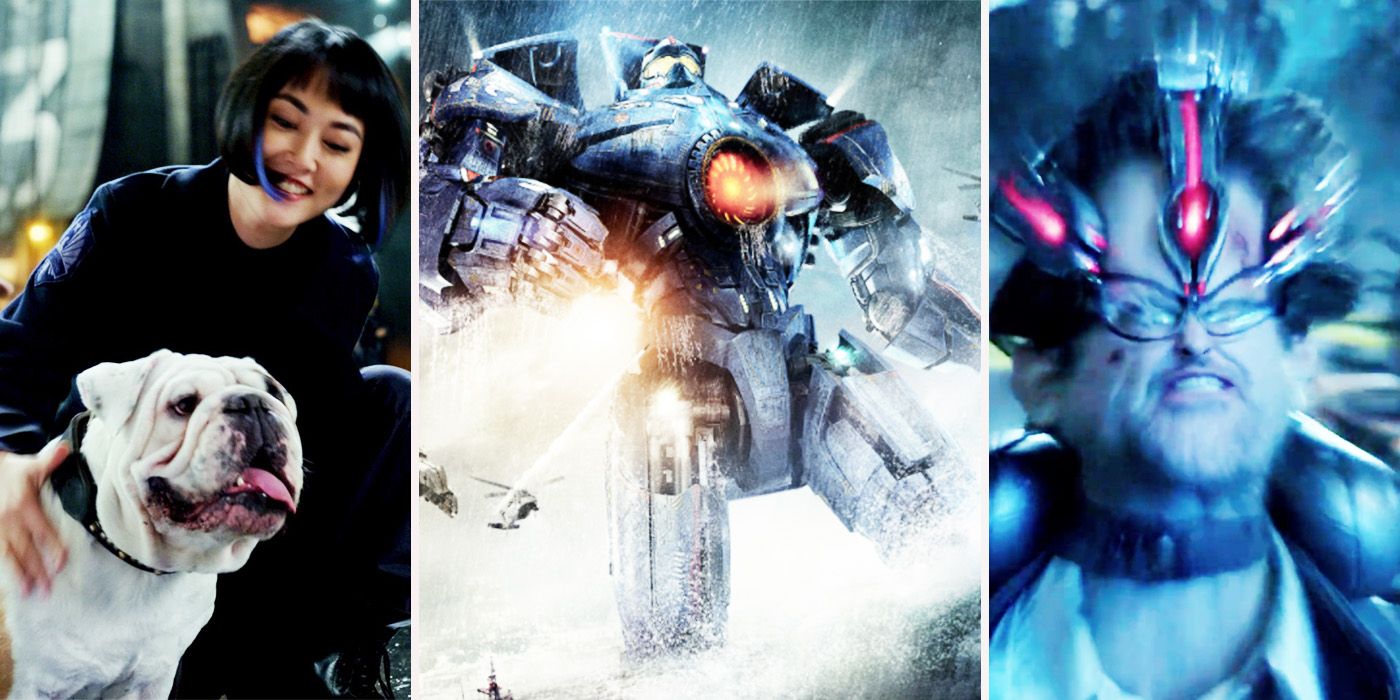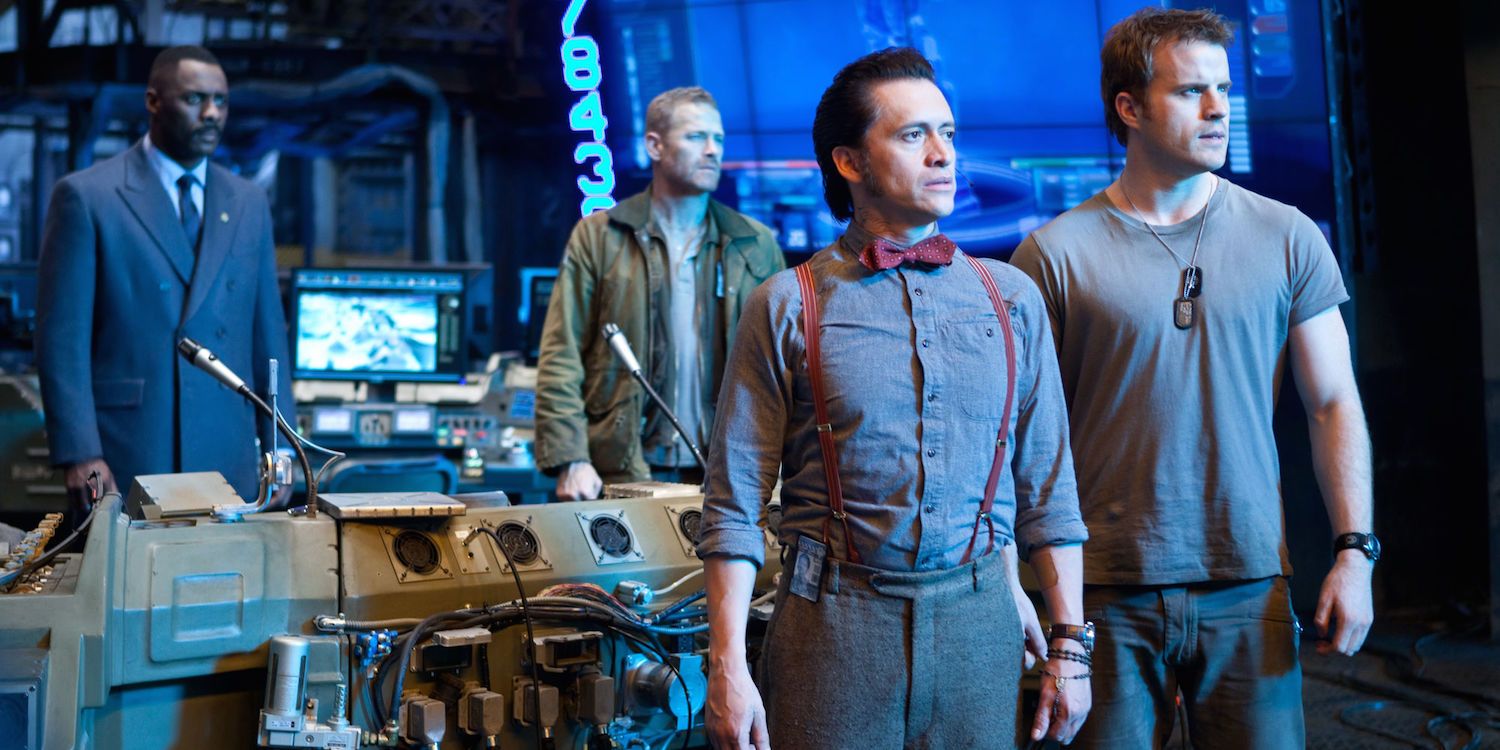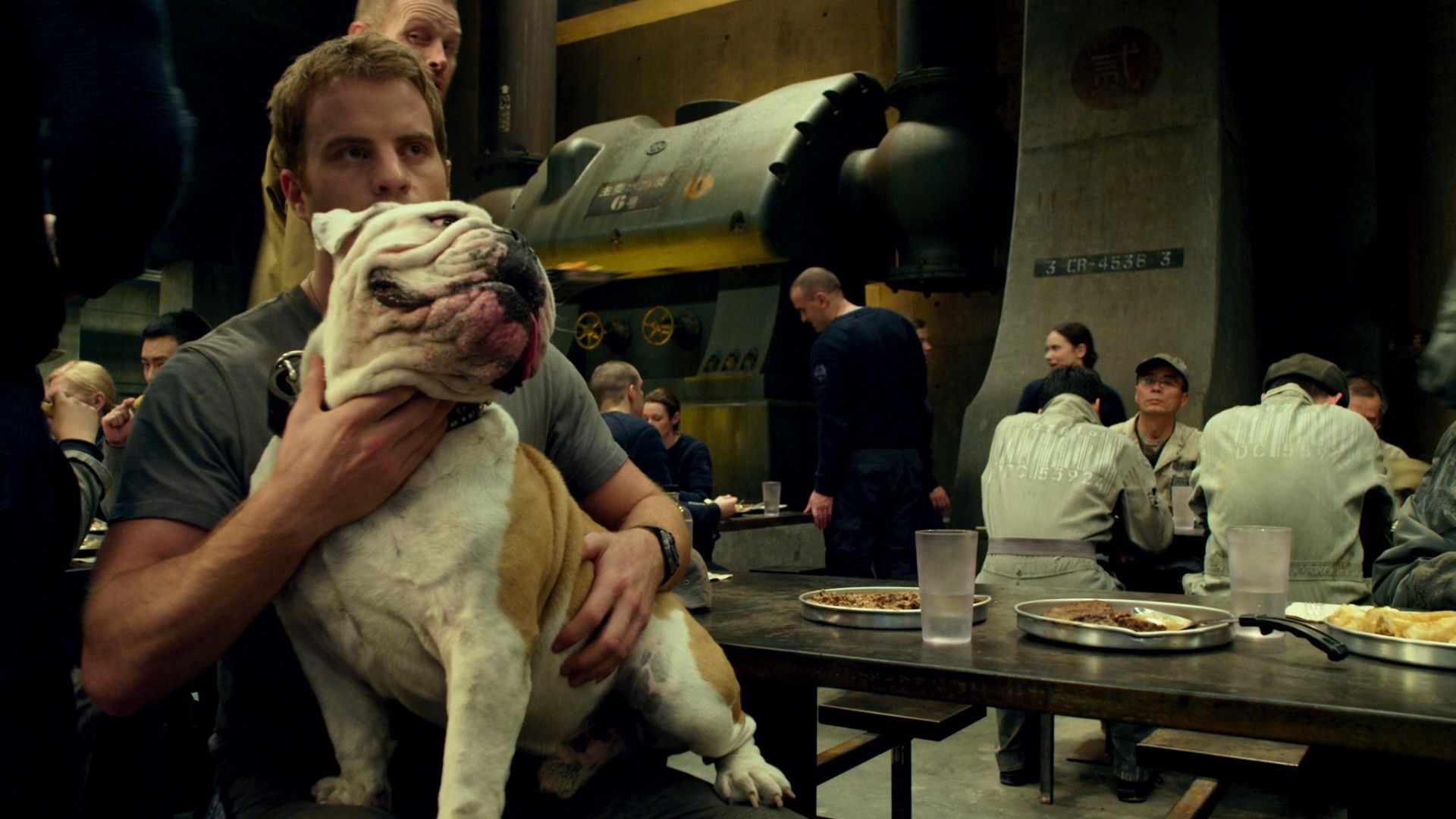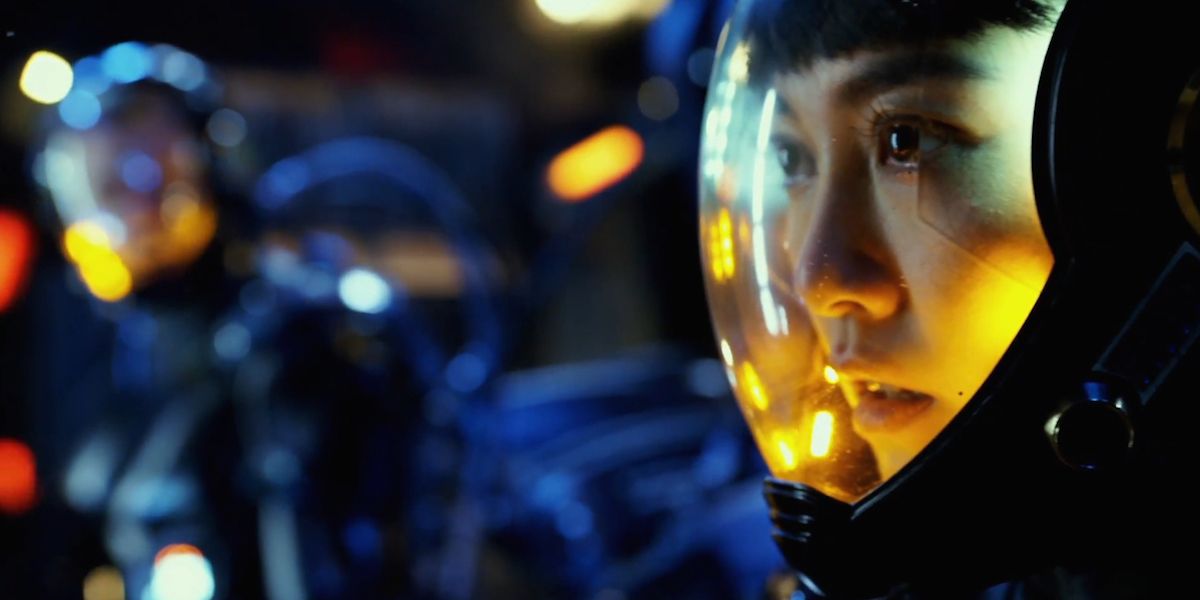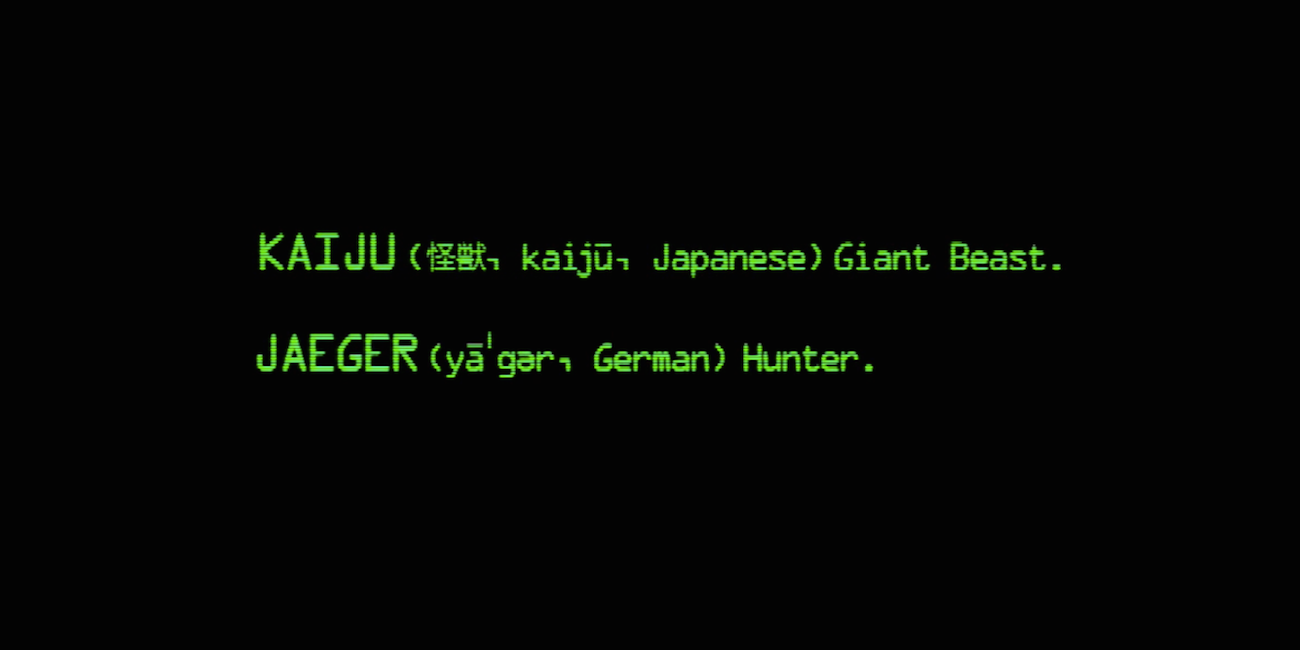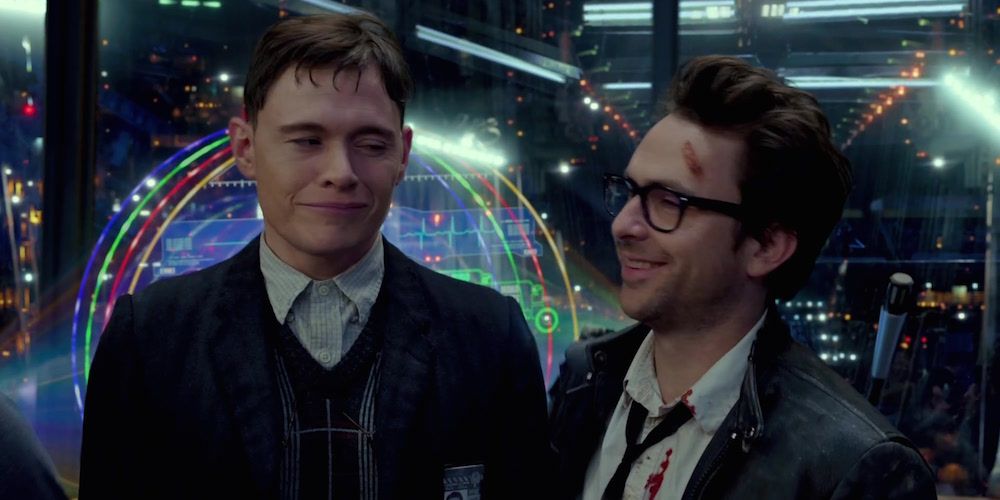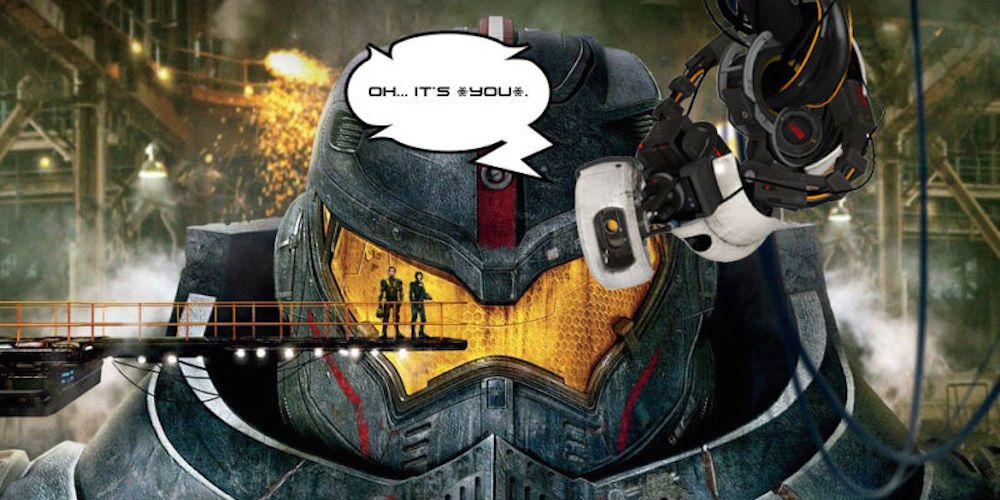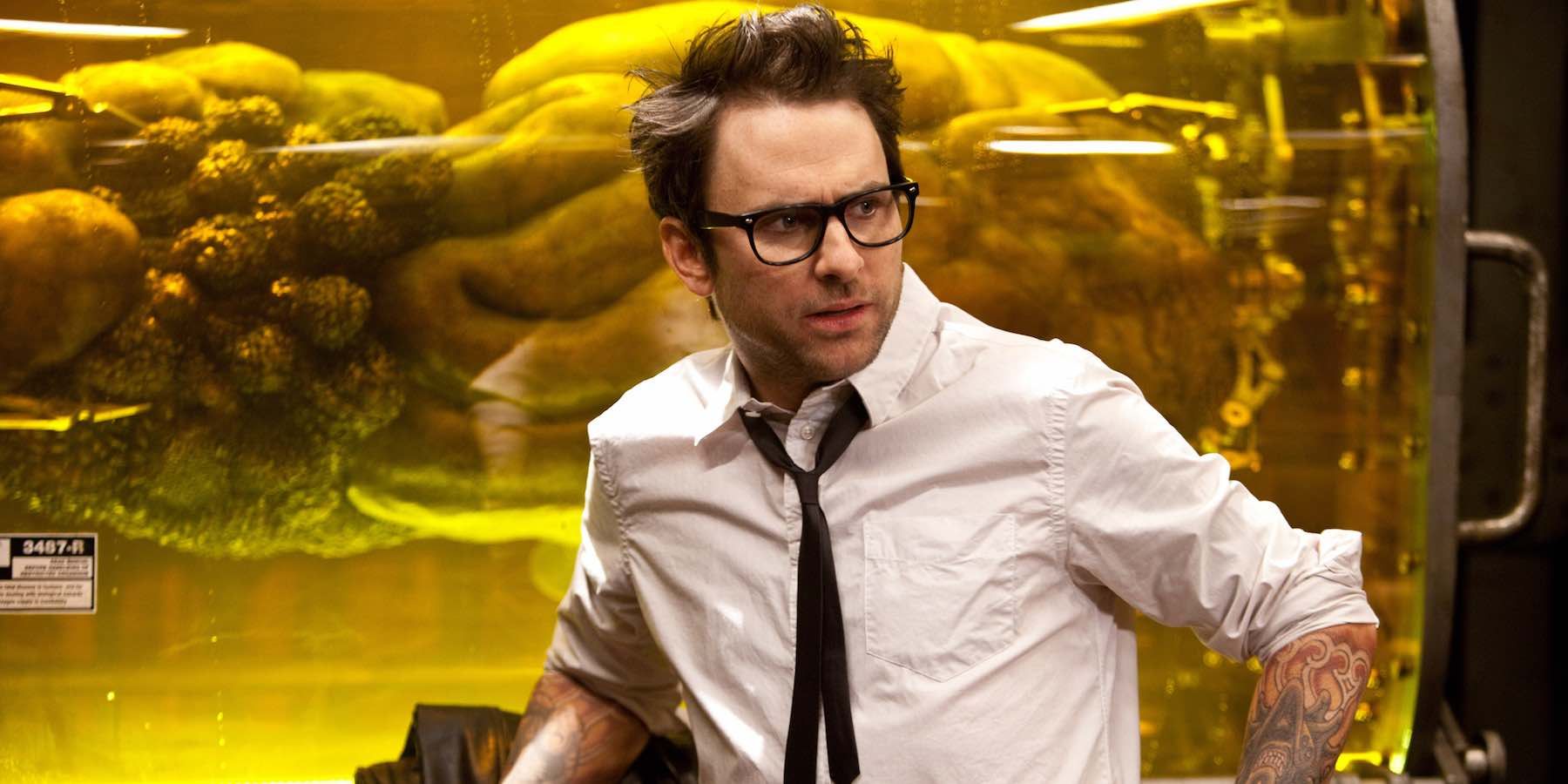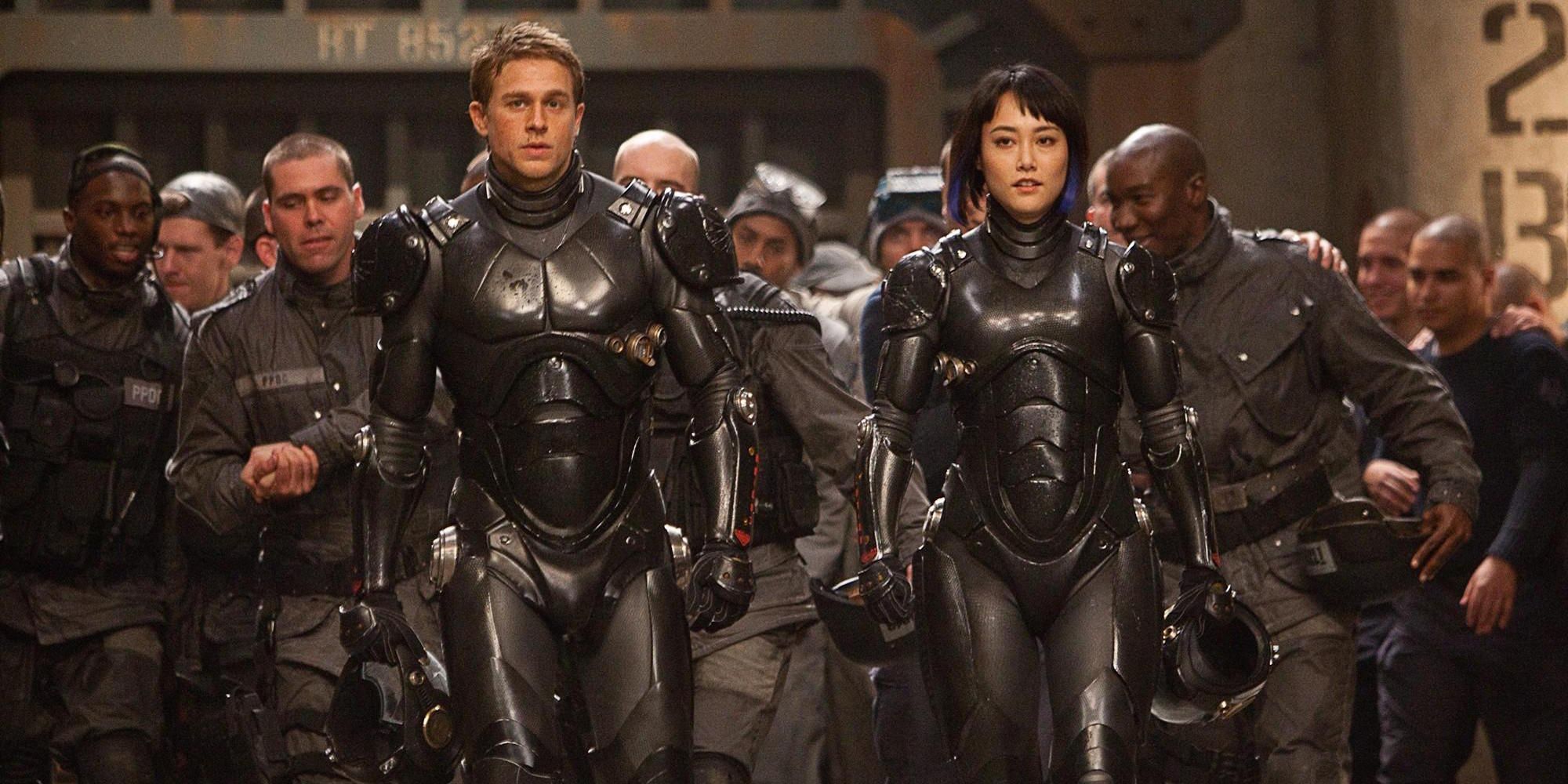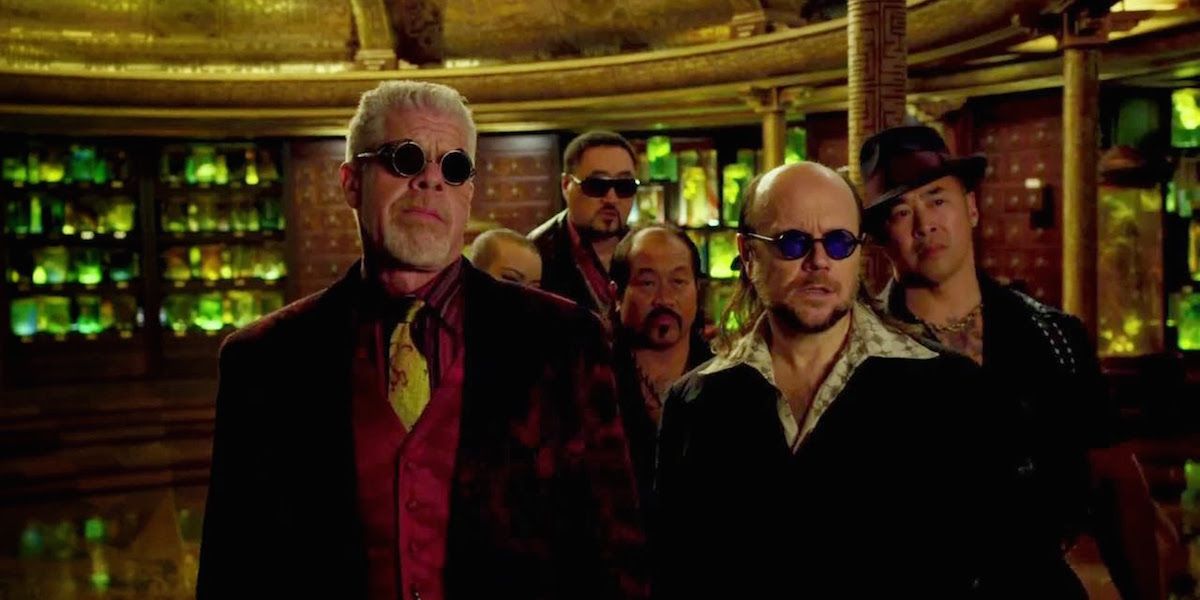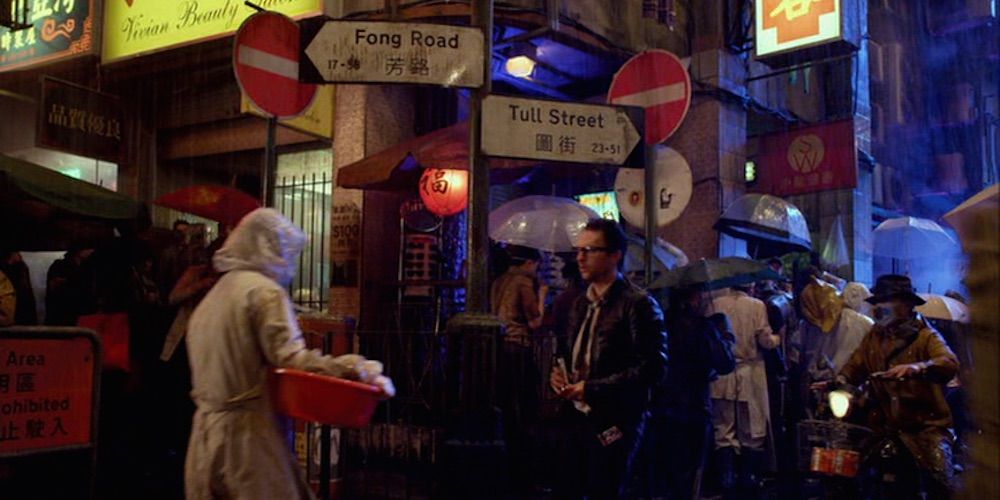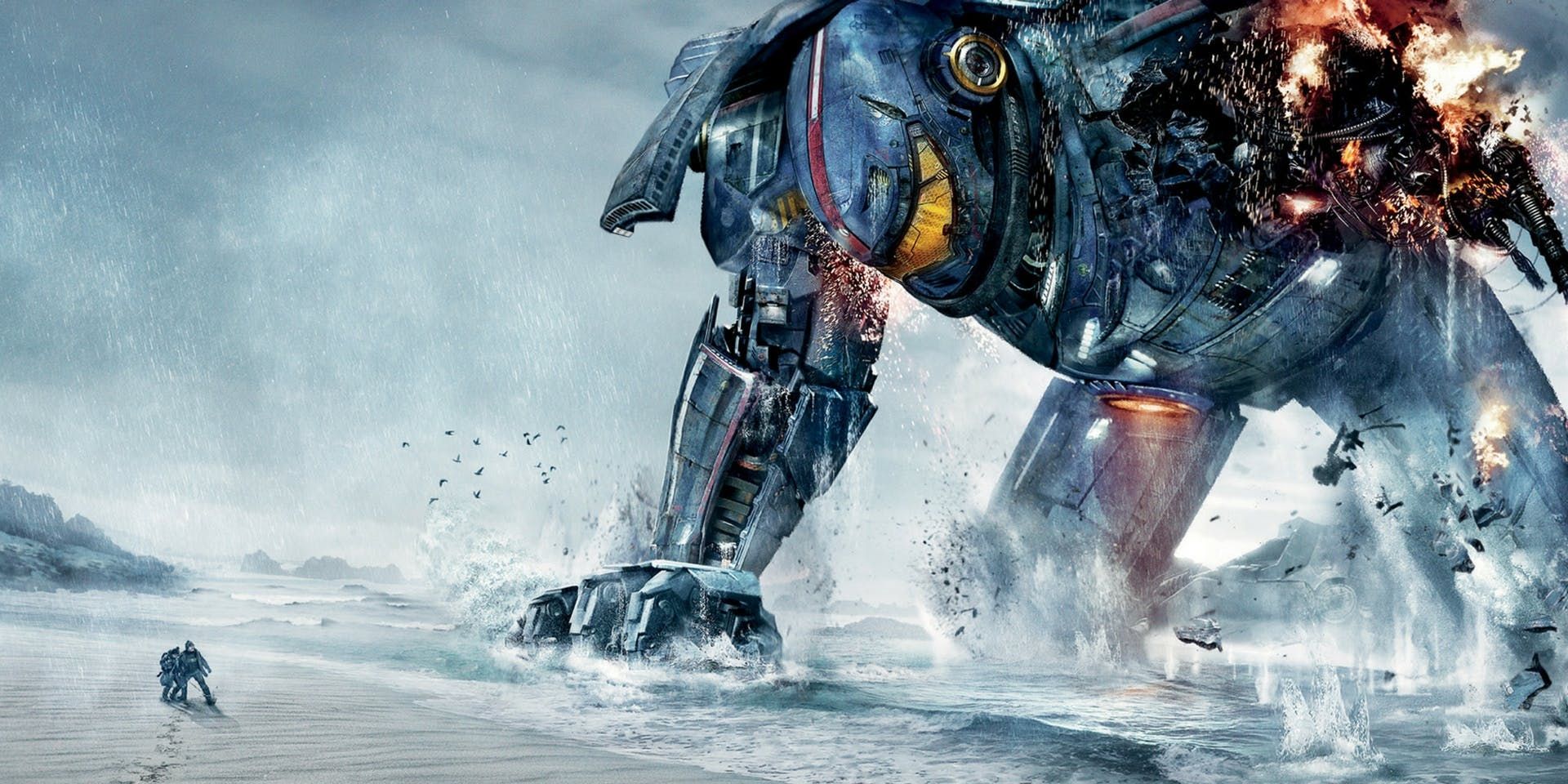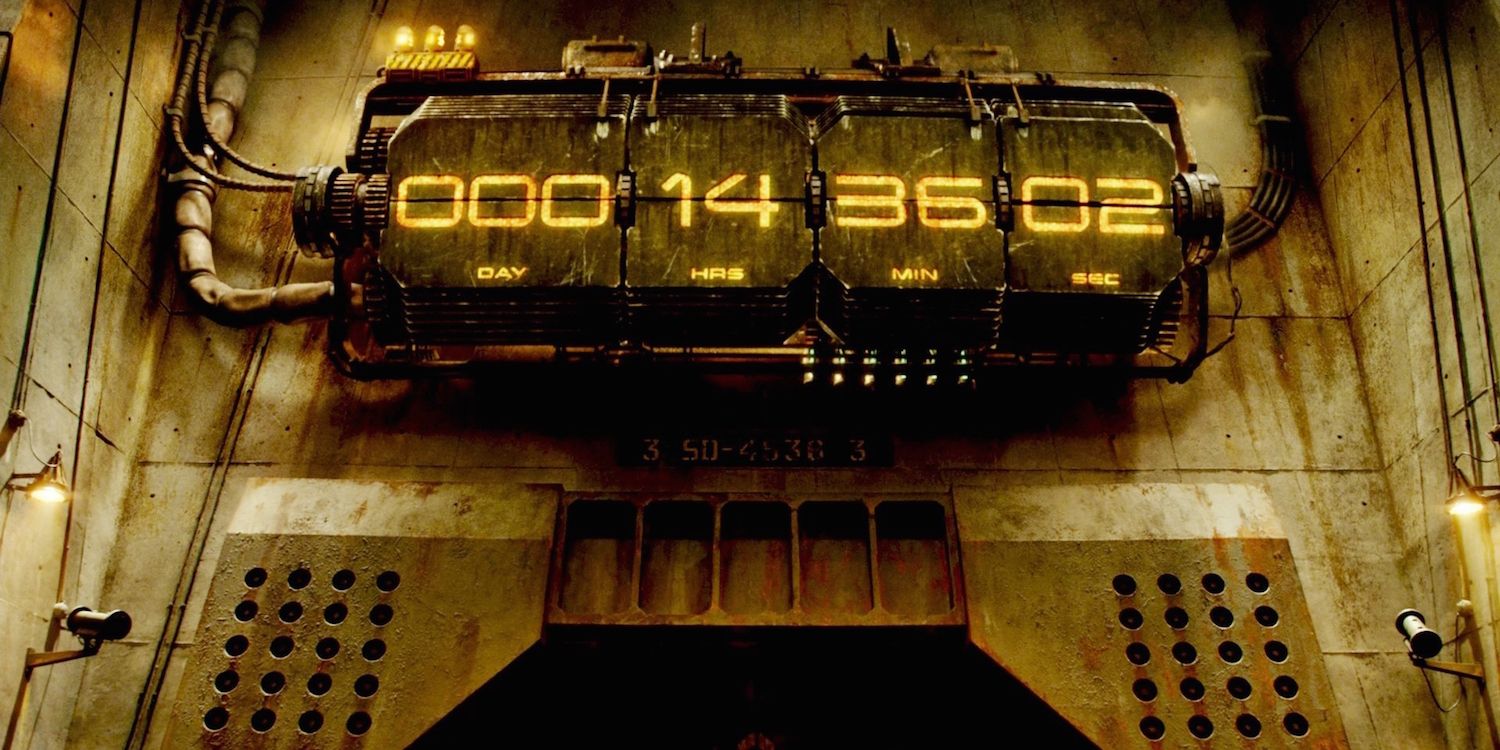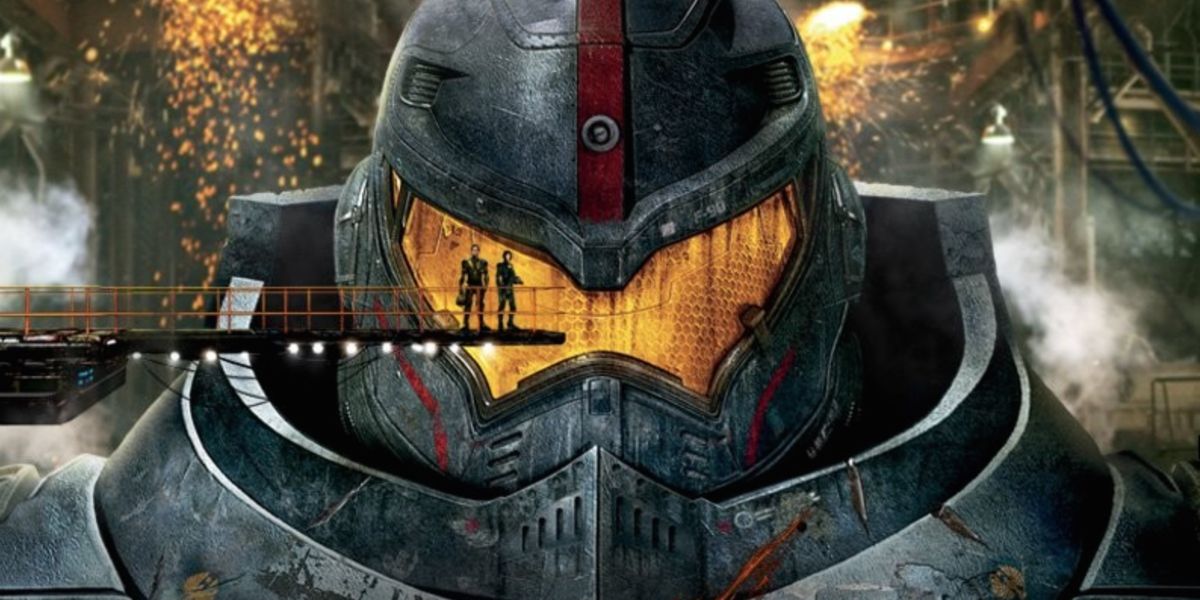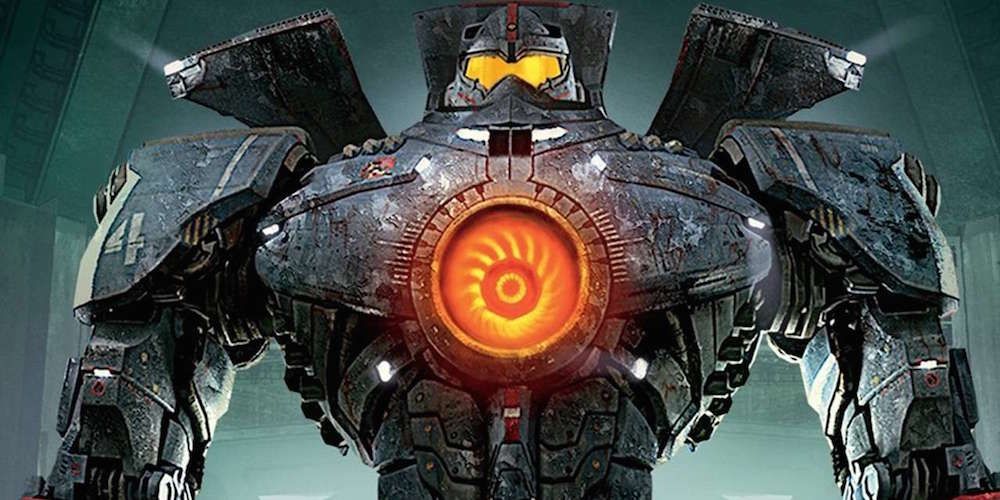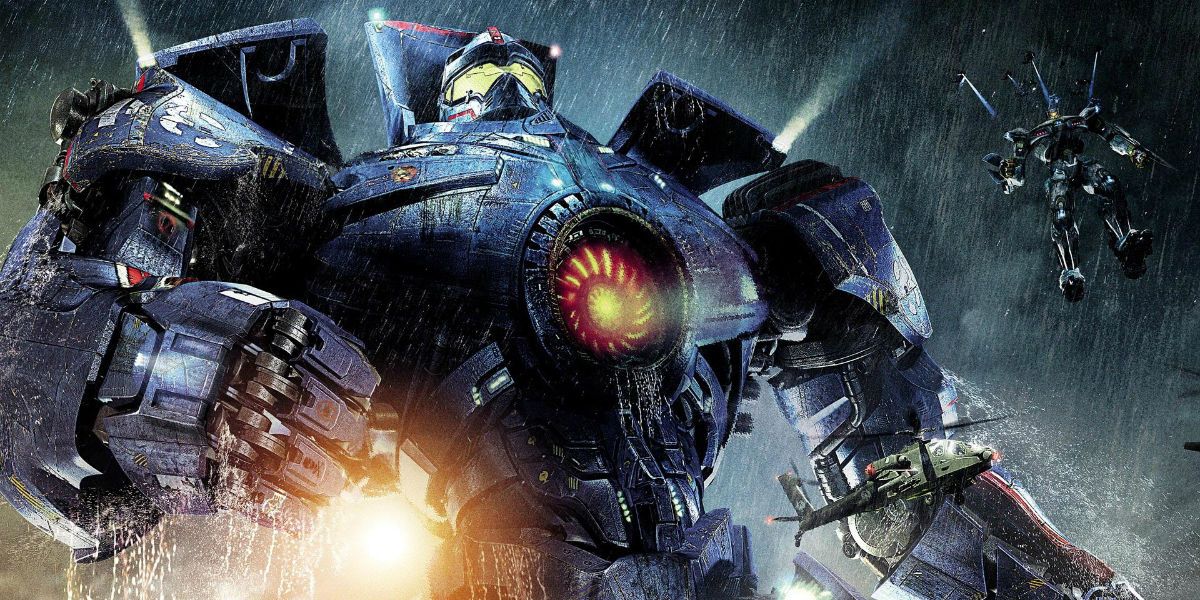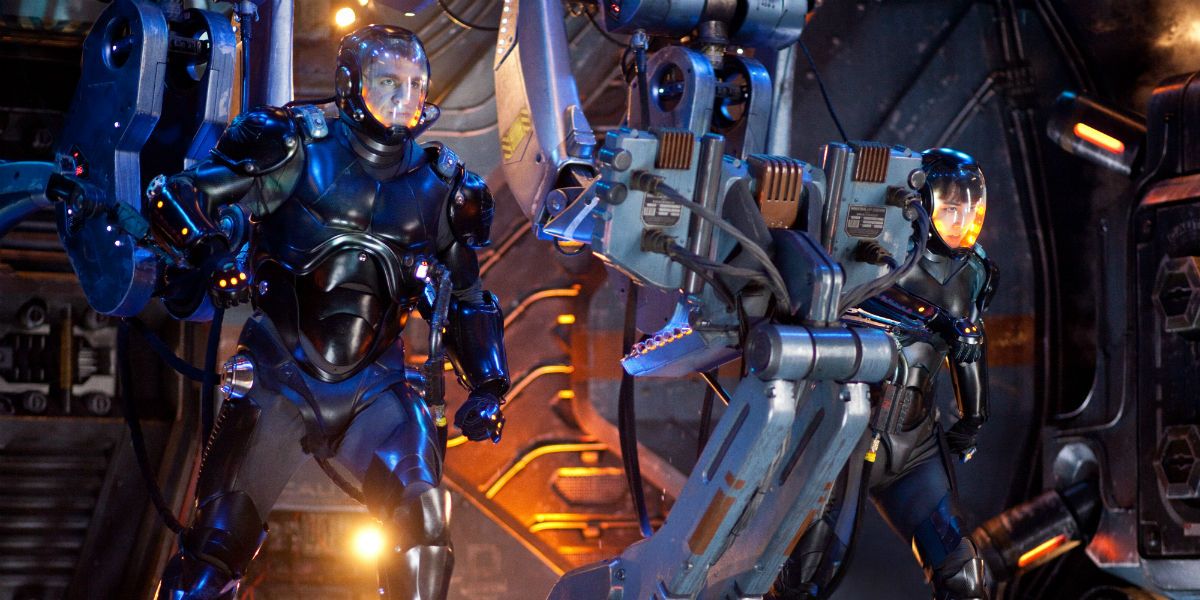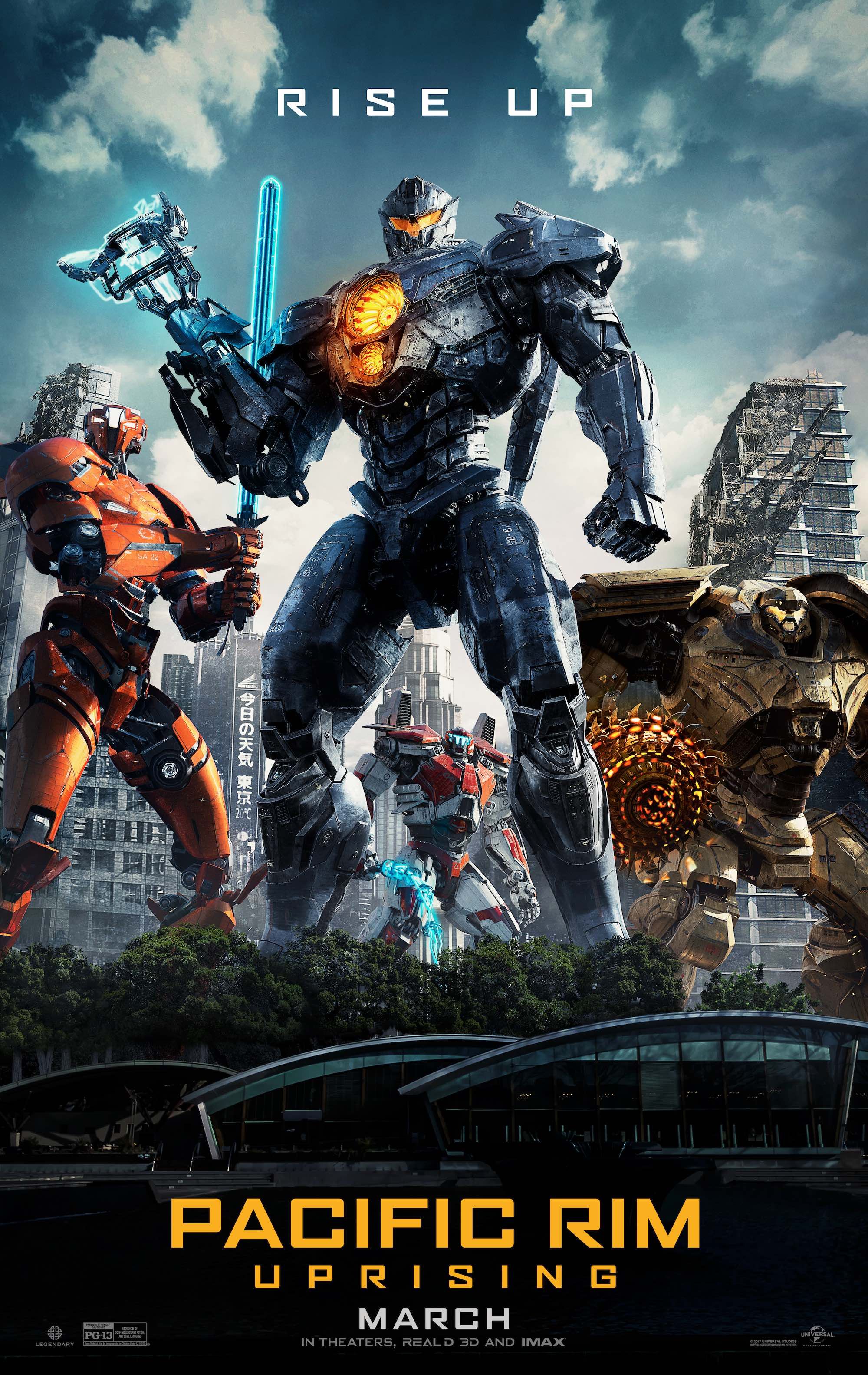With Pacific Rim: Uprising storming into theaters, now is the perfect time to rewatch Guillermo del Toro’s 2013 film, Pacific Rim. A film with the classic arthouse premise of giant robots fighting giant aliens, Pacific Rim may not be the most thematically profound, but it has a gigantic heart. And it was directed by Guillermo del Toro, a man known for injecting his personality into every inch of his films.
Del Toro’s visual acuity, love of monsters, and eye for detail are all legendary, and so it stands to reason that even a supposedly simple film like Pacific Rim would have its share of secrets, nods, and winks.
The first time you saw Pacific Rim, you were probably so focused on characters forming a mental link to pilot Jaegers and fight Kaiju that you didn’t notice much else. Not to worry! We’ve compiled a list of the best secrets and references in the film, so you can go back to watching Raleigh Becket and Mako Mori hit a Kaiju with an entire boat.
In its original run, Pacific Rim was a modest hit at the box office, but it attracted a loyal fan following. These diehards may know everything there is to know about the movie, but did you catch every Waster egg, every reference?
Find out by reading the 16 Things You Completely Missed In Pacific Rim.
Tendo Choi’s accessories say a lot about him
The head technician for the Jaeger Program, Ops Tendo Choi (played by Clifton Collins Jr.) doesn’t get a ton of dialogue that isn’t related to the mechanical workings of giant robots. His origins are thus somewhat hazy—his name is a mix of traditional Japanese and Chinese names, yet he’s played by a latinx actor, and according to writer Travis Beacham, he has roots in China, the Philippines, and Chile, and grew up in San Francisco.
Since we don’t learn much about him through words, it fell to the costume department to tell the audience more about him.
During the film, Choi is seen with a nicotine patch, a rosary, and a tattoo.
These accessories point to battles with addiction, an underlying belief in Christianity, and more. They are clearly meant to give the audience details about Choi they couldn’t have otherwise learned.
Max the bulldog is more important than you think
At its heart, Pacific Rim is about seemingly incompatible people coming together to do the impossible. This is true even for the side characters: Herc and Chuck Hanson, a father-son Jaeger pilot duo, communicate well when they’re punching aliens with a giant robot fist, but can't do so in real life.
Enter Max, the bulldog. Named after Max Martini (who portayed Herc), Max serves a surprisingly touching role for the Hansons. In interviews, Rob Kazinsky (who portrayed Chuck) said that Max was an “emotional conduit” between the two characters. This means that when the characters are showing Max affection, they’re really expressing the affection for one another that they have trouble vocalizing.
If that doesn’t make you teary-eyed, rewatch the celebration scene at the end.
While everyone at the Shatterdome cheers, Herc thinks about his son’s sacrifice, and looks at Max.
The post-credits homage
It’s no secret that Pacific Rim is a love letter to monster movies of years gone by. Guillermo del Toro is famous for his creature features, from Hellboy to The Shape of Water, and Pacific Rim is certainly the biggest of the bunch. Del Toro chose to honor his inspirations with the film’s dedication, which appears at the very end of the film, after the credits.
The film “is dedicated to the memory of monster masters Ray Harryhausen and Ishirō Honda.” Ray Harryhausen was a legendary visual effects artist who used stop-motion animation to create some of the most memorable monsters from the ‘40s to the ‘80s, with credits like Jason and the Argonauts and Clash of the Titans to his name. Ishiro Honda, of course, wrote and directed Godzilla and several of its sequels.
The dedication in Pacific Rim is accompanied by a Kaiju’s growl, clearly meant as a sign of respect.
Mistranslations
The very first screen in Pacific Rim defines two terms: kaiju and jaeger. Jaeger is translated from German (correctly) as “hunter.” Kaiju, meanwhile, is translated as “giant beast,” when in actuality it means “strange beast.” This is forgivable, though, since even in Japan kaiju is colloquially used to refer to giant monsters like Godzilla and Mothra. Still, to be 100% accurate, huge monsters like those that appear in Pacific Rim would be called daikaiju.
Another potentially frustrating but intentional moment involving translation comes near the end of the film, when the female lead, Mako Mori, says her final words to her mentor and father figure, Stacker Pentecost. Mako says something in Japanese, and no subtitles are shown, so those unfamiliar with the language are left in the dark. Those with some knowledge of Japanese (or access to Google Translate) can tell she says, “Teacher, I love you.”
The scientists don’t know that much about science
Charlie Day and Burn Gorman play the pair of scientists who lead the Jaeger Program’s research division, Newt Geiszler and Hermann Gottlieb. Both scientists are introduced as geniuses, but when it comes to actual science, they seem a bit shaky. Hermann says pseudoscientific nonsense, describing a rift between worlds as “atomic in nature,” which means nothing.
At one point Newt compares a Kaiju’s secondary brain to dinosaurs, which were once theorized to have two brains to control their large bodies. This theory was disproven a long time ago.
Of course, it’s always possible that in the world of Pacific Rim, dinosaurs actually did have two brains, since in this story, the dinosaurs were the first wave of colonizers sent by the alien invaders. If that’s the case, this could be a clever bit of worldbuilding, but until that’s confirmed, we’ll stick to assuming it was a mistake.
GLaDOS makes a cameo
Fans of the video game franchise Portal likely thought the voice of Gipsy Danger’s onboard computer sounded familiar, and they were right!
Guillermo del Toro is a huge fan of Valve’s Portal and Portal 2, having played the latter co-op with his daughter. When it came time to set a voice for the computer, del Toro went straight to Valve and asked permission to hire Ellen McLain as a voice actor, and they said yes.
The computer’s voice in the film isn’t exactly GLaDOS, as del Toro used slightly different vocal effects on McLain’s voice. But the similarity is both undeniable and deliberate, as the director used his sharp eye for detail to give a nod to one of his favorite video games.
Newton's cradles
As a Kaiju rampages through Hong Kong looking for Newt Geiszler, there’s a notorious joke where Gipsy Danger’s fist crashes through an office building. The joke is that the fist only gently taps one table in the building, which is just enough to set in motion one of those pendulum toys you’ve likely seen on desks or in physics class.
At first glance, it seems like a throwaway gag.
But did you know what those toys are called? They’re known as Newton’s Cradles, because they demonstrate one of Sir Isaac Newton’s Laws of Motion.
That it’s a Newton’s Cradle that gets set off is no coincidence, as it occurs while a Kaiju is hunting a character named Newton (it’s what Newt is short for!). It may be silly, and it definitely wouldn’t work, as Newton’s Cradles can’t be set in motion that way, but it’s still clever.
Rage Against The Machine
Tom Morello is an active guy. Known for his guitar work on multiple projects, from Rage Against the Machine to his own solo career, he gets around. When it came time for composer Ramin Djawadi to craft Pacific Rim’s main theme, he went straight to Morello to add in some guitar licks.
Morello had this to say: "When they asked me to put some giant robot riffs and screaming underwater monster licks on the film score, I was all in.” The theme went on to become one of the most memorable parts of the film’s score, injecting several sequences with a rock and roll flair that adds a sense of weight and rhythm to the giant robots.
The Bone Powder Man
When Newt Geiszler takes to the streets of Hong Kong to find Hannibal Chau and procure a living Kaiju brain, the first person he talks to after entering the shop is a genuinely creepy, greasy-looking character who is credited as nothing but the “Wizened Man.” This guy tries (unsuccessfully) to sell Newt Kaiju bone powder, to boost his “potency.”
The Wizened Man is one of Hannibal Chau’s employees, and he’s played by none other than Santiago Segura.
Segura is a personal friend of Guillermo del Toro, and he’s appeared in several of del Toro’s films, including the two Hellboy movies and Blade II. On top of that, Segura is actually a successful film producer in his native Spain, not to mention the writer, director, and star of the Torrente series of spy parodies, which has seen five installments.
Where "Tull St" and "Fong Road" come from
As Newt explores the Bone Slums of Hong Kong to find black market kingpin Hannibal Chau, he stops under two noticeable street signs labeled Tull Street and Fong Road. These street names are a tip of the hat to two men involved in the production of Pacific Rim: Thomas Tull and Henry Fong. Tull was the film’s producer (and has gone on to produce Pacific Rim: Uprising), and Fong was a visual concept artist on the film, working specifically on the visuals for the streets of Hong Kong.
Guillermo del Toro has always been fond of paying his respects to his colleagues, and this little Easter egg is no different. The details in his sets are planned out to the tiniest level, and that includes expressing gratitude to the people who helped make Pacific Rim possible in the first place.
The film's secret message
Just after drifting with a Kaiju brain, Newt tries to explain to his commanding officer exactly what he learned of the attacking aliens. In a frenzied speech, he characterizes the aliens as colonizers, bent on using Earth’s resources to their own ends. He says they tried once before with the dinosaurs, but failed because the atmosphere wasn’t quite right for them. Now, with humans polluting the oceans and putting carbon dioxide into the air, the planet is much better suited for the aliens.
Coupled with an earlier bit showing that Kaiju blood is toxic and an environmental disaster, this incredibly brief moment shows just what Guillermo del Toro thinks of those who pollute our planet. If you’re dumping toxins in the oceans or poison into the air, you might as well be helping to terraform the planet for an alien invasion.
The War Clock's countdown
Head to any Pacific Rim trivia/continuity/goofs page on the internet and they’ll tell you that the War Clock, the imposing clock set above the entrance to the Jaeger Program’s Shatterdome, is inconsistent from shot to shot. On the other hand, the countdowns, from the 15 second countdown when Mako and Raleigh first pilot Gipsy Danger to the one minute countdown at the end, are actually quite accurate.
What’s odd about the final one minute countdown to Gipsy Danger’s nuclear reactor meltdown is that while the time elapsed is perfectly accurate— it takes exactly one minute from Raleigh using the manual override to the Jaeger blowing up— the clock isn’t. The time elapsed is perfect to the second, but the clock shown in the movie doesn’t accurately show the time left until the explosion.
This is likely deliberate, so del Toro can play with your sense of time and heighten certain moments to maximize tension.
The hidden practical effects
Pacific Rim is known for its digital effects, and with good reason. Guillermo del Toro crafted the computer-animated sequences at least as lovingly as he did the practical ones.
There are parts of Pacific Rim that you might expect were done with VFX that actually were done practically— like the aforementioned bit with the Newton’s Cradle. For the shot of the Jaeger’s fist ripping through an office building, the Pacific Rim crew actually built a miniature set with cubicles and everything.
The set wasn’t digital, though the fist was.
Additionally, sequences set during Kaiju attacks didn’t always rely on computer animation. For instance, if you watch the scene from Mako’s childhood where she hides from a Kaiju, you’ll notice several parts of the set shake with the Kaiju’s footsteps. This was actually accomplished by rigging all these parts up to a hydraulic system, not with a computer!
Gipsy Danger’s World War II inspiration
Gipsy Danger is a pretty odd name for a 2500 ton warmech, and fans might have been scratching their heads over the seemingly misspelled “Gipsy.” However, the name is in line with del Toro’s vision for the main Jaeger, as World War II-era fighters and pilots inspired every part of the design. If you look closely at Gipsy Danger, you’ll see art on its chest akin to one of these fighters, nose art and pin-up ladies included.
Gipsy Danger, then, takes its name from the de Havilland Gipsy engine, which powered British fighter planes throughout World War II and beyond. Del Toro used this name and aesthetic to inspire a sense of nostalgia in viewers, and to get them to root for Gipsy Danger when it went up against Kaiju.
The Jaeger Program's Western roots
While del Toro may take inspiration from WWII-era pilots and fighters, he didn’t want to make Pacific Rim overtly military, nor did he want to glamorize war. Del Toro took many steps to let his audience enjoy the action without worrying about things like bystander casualties and warmongering.
One of the ways he did this was with the ranks he chose for Jaeger pilots.
The leader of the Jaeger Program is Marshal Stacker Pentecost, and the pilots who report to him are referred to as Rangers. These titles were meant to evoke a setting akin to a Western film, only with giant robots as the gunslingers.
These titles also helped maintain a sense of individualism that is key to the film’s dynamic. Rather than a military setting, where soldiers are required to obey at all costs, a Western feel allows for more independent characters.
We learn the backstory of every character who drifts
To share the neural load of piloting a Jaeger, rangers link their minds and handle each one side each. When they go “into the drift,” they undergo something called a “neural handshake,” each side learning about the other’s life story. And so, every time two characters are shown going into the drift, viewers get an extremely brief look into their lives.
In these clips (most of which are less than a second long), we see things like Hermann teaching a mathematics class as a teenager, Raleigh playing with his brother Yancey during their childhood, Mako hugging her father, Newt getting a tattoo, and more.
In these sequences, we learn things about the characters we wouldn’t have otherwise known.
Hermann was lonely as a child, Newt’s father used to take him fishing, Mako spent time in a rock garden— we would never seen any of this without the drift sequences.
---
Is there anything we missed in Pacific Rim? Let us know in the comments!

